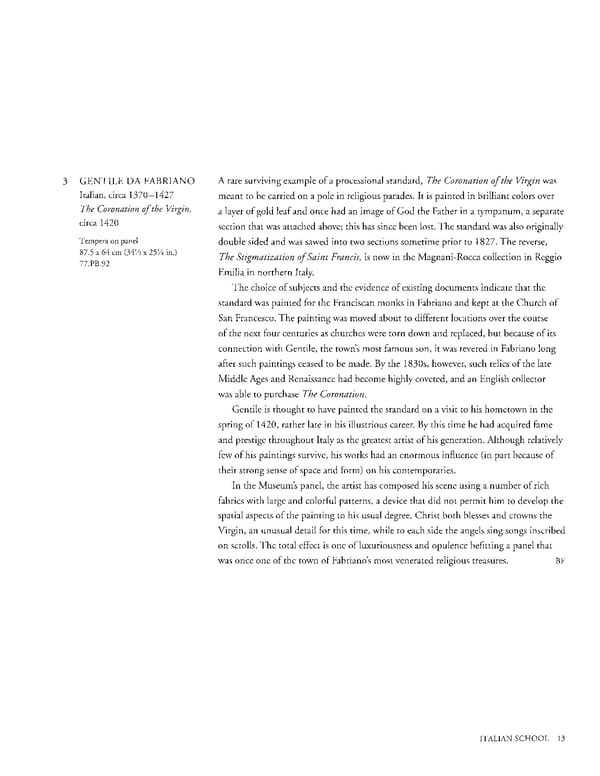3 GENTILE DA FABRIANO A rare surviving example of a processional standard, The Coronation of the Virgin was Italian, circa 1370-1427 meant to be carried on a pole in religious parades. It is painted in brilliant colors over The Coronation of the Virgin, a layer of gold leaf and once had an image of God the Father in a tympanum, a separate circa 1420 section that was attached above; this has since been lost. The standard was also originally Tempera on panel double sided and was sawed into two sections sometime prior to 1827. The reverse, 87.5 x 64 cm (34½ x 25¼ in.) The Stigmatization of Saint Francis, is now in the Magnani-Rocca collection in Reggio 77.PB.92 Emilia in northern Italy. The choice of subjects and the evidence of existing documents indicate that the standard was painted for the Franciscan monks in Fabriano and kept at the Church of San Francesco. The painting was moved about to different locations over the course of the next four centuries as churches were torn down and replaced, but because of its connection with Gentile, the town's most famous son, it was revered in Fabriano long after such paintings ceased to be made. By the 1830s, however, such relics of the late Middle Ages and Renaissance had become highly coveted, and an English collector was able to purchase The Coronation. Gentile is thought to have painted the standard on a visit to his hometown in the spring of 1420, rather late in his illustrious career. By this time he had acquired fame and prestige throughout Italy as the greatest artist of his generation. Although relatively few of his paintings survive, his works had an enormous influence (in part because of their strong sense of space and form) on his contemporaries. In the Museum's panel, the artist has composed his scene using a number of rich fabrics with large and colorful patterns, a device that did not permit him to develop the spatial aspects of the painting to his usual degree. Christ both blesses and crowns the Virgin, an unusual detail for this time, while to each side the angels sing songs inscribed on scrolls. The total effect is one of luxuriousness and opulence befitting a panel that was once one of the town of Fabriano's most venerated religious treasures. BF ITALIAN SCHOOL 13
 Masterpieces of the Getty Museum: Paintings Page 13 Page 15
Masterpieces of the Getty Museum: Paintings Page 13 Page 15